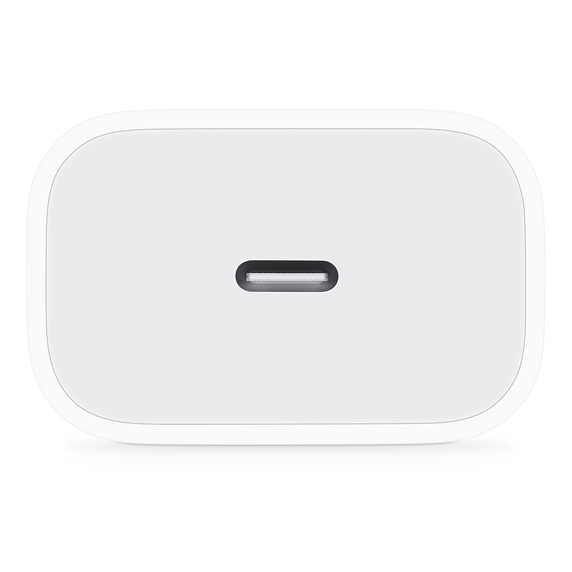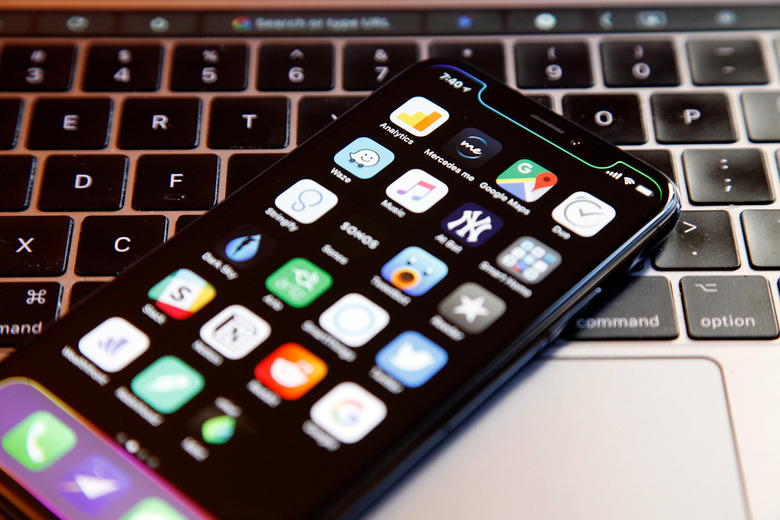Apple Should Totally Do The Unthinkable With The iPhone 11
A report a few days ago said that Apple might be planning a massive change for the iPhone 11, one that we hardly expected Apple to go for until a few months ago. Apple, the story said, will replace the Lightning port on its iPhones with USB-C as soon as this year. That used to be regarded as an unthinkable move for Apple, but the iPhone maker actually signaled that it's ready to replace its proprietary connector with USB-C in late 2018 when it unveiled the new iPad Pro models, both of which feature USB-C ports instead of Lightning. Then, a more recent report claimed the iPhone 11 phones will have Lightning ports, which isn't necessarily great news.
There's a big chance that iPhone users who buy the iPhone 11 this year have a large collection of headphones, cables, dongles, and other accessories that work with the "old" Lightning port on Apple's iOS devices. People obviously don't want to have to spend more money on other accessories after buying what's probably going to be a ridiculously expensive new iPhone 11 once it's released.
But replacing the iPhone's original 30-pin connector with the Lightning port is one of the best decisions Apple ever made. Not only was Lightning better than anything else when it comes to ease of use thanks to its reversible design, but it also freed up internal space in the iPhone, helping the company come up with sleeker designs. There wouldn't be an all-screen iPhone X without Apple ditching the 30-pin port and headphone port, by the way.
For years, the competition had no match for Lightning, until USB-C came along because Apple helped develop the new port. Apple was one of the first companies to launch a laptop with only USB-C ports that could be used both for power and data transfer, and it did it at a time when we didn't have any other USB-C accessories for it.

USB-C is just as easy to use as Lightning, and it wasn't a surprise to see Android users replace micro USB with USB-C ports in the years that followed. You don't have to pay attention to how you stick that USB-C cable in, and USB-C cables work with all sorts of computers, smartphones, and accessories these days. It's not 2015 anymore, and all major iPhone rivals out there now ship with USB-C ports.
While it was one of the first companies to push the new USB standard, Apple has a USB-C/Lightning problem of its own right now. To this day, you still need a dongle or a new $20 cable to connect any post-2012 iPhone to MacBooks that only feature USB-C ports — that list includes MacBook (2016 and later), MacBook Pro (2016 and later), and the new Retina MacBook Air. That can be incredibly annoying (see image above) if you're the kind of iPhone user who periodically performs encrypted iPhone backups.

Beyond that, USB-C supports faster iPhone battery charging as long as you have the right charger. But rather than buy Lightning-to-USB-C adapters for that new USB-C charger (above), wouldn't it be a lot easier to have USB-C ports on the iPhone? That way, the USB-C cables and chargers would just work for everything, and you wouldn't need to remember to travel with every cable and dongle you might need.
Apple acknowledged back in October that USB-C is the way to go by turning the iPad Pro into the first iOS device to feature a USB-C port. On its website, Apple says that USB-C gives you "a high-performance connection to accessories like an external display or camera." No, USB-C on iPad Pro doesn't offer you access to external storage devices like a portable hard drive, but USB-C is still better than Lightning.

Given that the iPhones offer performance that's on par with iPad Pros, one could always argue that the same USB-C accessories that work with an iPad Pro would also work without a hitch with any new iPhone. Also, Apple is all about user experience, and a little thing like replacing Lightning with USB-C could make a big difference.
In other words, I really hope that Apple does the unthinkable with the iPhone this year and retires the Lightning port in favor of something that's much better.
